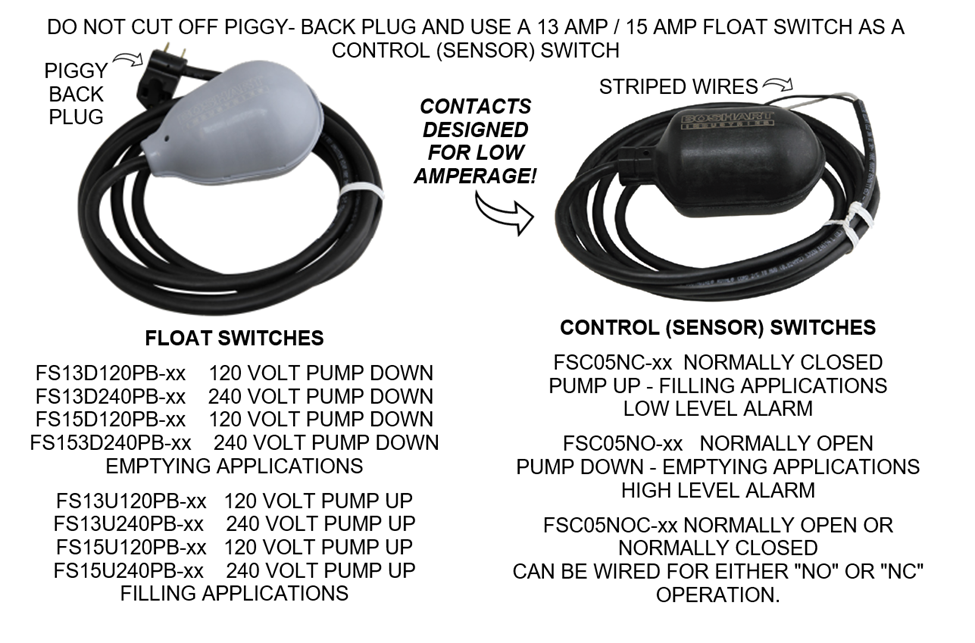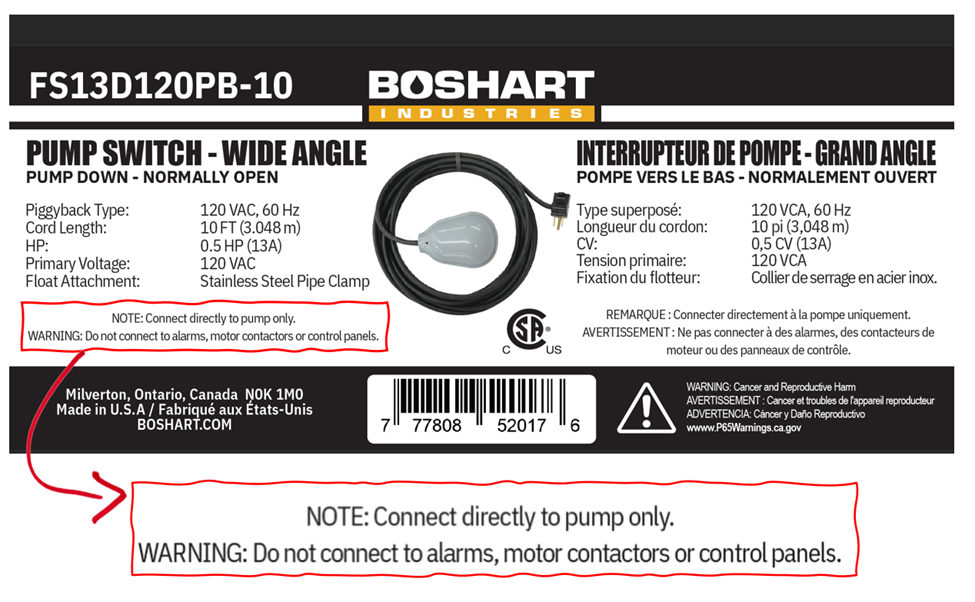Why is a Pump Float Switch not to be used as a Control Switch?
In this article we will cover why “Float Switches” must not be modified. The practice of cutting off the piggyback plug and using a 13- or 15-Amp float switch as a “Control” switch will result in premature failure.

The warning on the BOSHART float switch cartons is for a reason. At face value it may seem that it makes no sense that a switch that can handle high amperage is not suited for a lower amperage control circuit. However, the reason is that there is a difference in the contact materials so they should not be used as control switches. It is not that it wouldn't work, but there is not a 100% guarantee that it will. The problem is that they will not last.

Here is why!
“Control switch internal contacts can be silver and/or gold plated while the pump switch internal contacts are silver cadmium alloy plated. Every time you have a switch open or close an arc will happen and a level of carbon/corrosion builds up on the contacts. When the switch closes silver cadmium alloy contacts require a higher “wetting” current to blow off the carbon/corrosion. Our extremely low voltage and amps on alarm and control panel inputs do not supply that power. So, if you use a pump switch for a control panel it may work for a while but then once the carbon/corrosion builds up to a point the switch will accumulate excessive resistance through it which will cause a failure of the float switch to activate the alarm or control panel input.”
Not an issue related just to BOSHART switches!
We are not alone; this is an industry standard and other prominent float switch manufacturers also make similar statements on their literature and websites. See a copy of a statement below:
“NOTE: This switch must be used with pumps that provide integral thermal overload protection. A Pump Switch is designed for Horsepower (HP) rated loads and is not suitable for control (pilot duty) applications. It will fail prematurely when switching loads less than 1 Amp at 120 VAC. Select a float switch from our Control Switch offering for control applications.”
